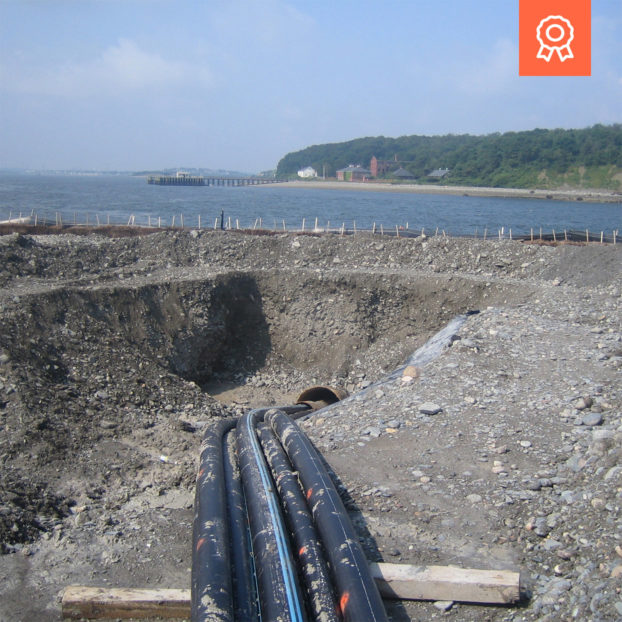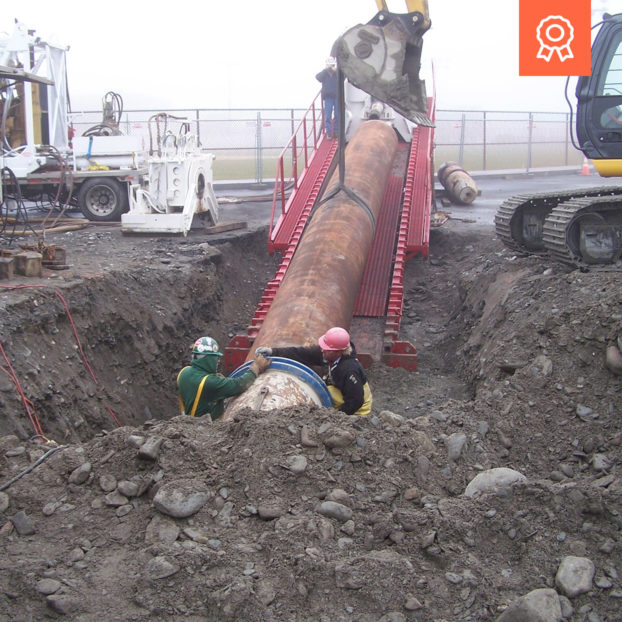Peddocks Island, located between the coasts of Hull and Quincy, Massachusetts is one of the largest and most ecologically diverse islands in Boston Harbor and has been a key component of the Boston Harbor Islands National Recreation Area since 1996. On the East Head section of the island is Fort Andrews, which served as an active Coast Artillery post before being abandoned shortly after the end of WWII. Fort Andrews, originally built in 1900, and the numerous additional buildings on Peddocks Island had experienced varying amounts of damage and decay over the last century.
Boston Harbor Now, an alliance of non-profit entities (including the National Park Service) that raises funds to support the park, sought to restore and update the island to provide a unique destination that generates revenue, preserves historic Fort Andrews, and attracts new visitors from the Boston area and beyond. Prior to redevelopment efforts, however, reestablishment of utility service to the island was necessary. Environmental Partners was retained by Boston Harbor Now in late 2003 to conduct a feasibility study and develop a comprehensive plan to restore water, wastewater, and power utilities to the island.
The project began with a feasibility study, which consisted of an evaluation of water supply alternatives, wastewater management alternatives, power supply alternatives, and stormwater systems. Throughout the assessment EP held and engaged in stakeholder meetings and communications, and provided findings reports. After 4 months, and a thorough on-island investigation including utility inspections, survey, and subsurface investigations, the study was completed and final recommendations were presented in October 2005. While several alternatives were explored and examined, EP’s ultimate recommendations concluded that submarine water, sewer, power, and communication connections should be made across Hull Gut, a significant shipping channel, using horizontal directional drilling (HDD).
The recommended course of action involved connecting all three primary utilities (water, power, and wastewater) from Hull to the island via a single steel conduit, streamlining the necessary work and providing the most comprehensive and cost-effective approach. The 20-inch steel casing could accommodate all necessary pipes and connections. Installed within the steel casing was a bundle of high density polyethylene (HDPE) pipes, including a 6-inch water main, a double walled sewer force main, primary power and communications conduits, and a pair of spare conduits. A submersible sewage pump station was also designed and constructed on the island and connected to the double wall force main back to the Hull sewer system.
By 2020, Phase II and Phase III will allow for 2,800 day/overnight visitors to the island, peak wastewater flows of 30,000 GPD, and a maximum daily water use of 45,000 GPD to accommodate the influx of traffic to the island. EP oversaw all utility construction associated with Phase I, completed in 2006. Overall, this project was completed two months ahead of schedule, free of change orders, and $20,000 below the base contract price allowing for future phases to begin earlier, and preserving much needed funds for this exciting effort.




